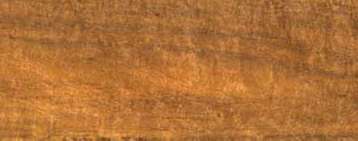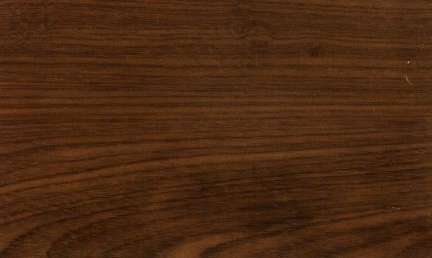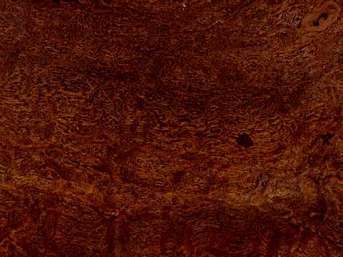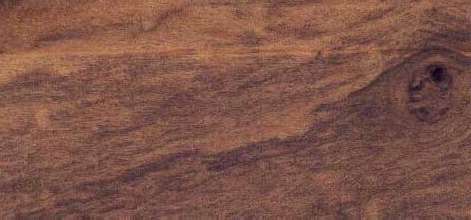    
Imbuia (Phoebe porosa)
Family: Lauraceae
Common names: Amarela, Brazilian walnut, Canella, Canella imbuia, Determa, Embuia, Embuia preta, Embuia vermelho, Embuya, Imbuia, Imbuia-amarela, Imbuia-brazina, Imbuia-clara, Imbuia-parda, Imbuia-rajada, Imbuia-zebria, Imbuya, Imported stinkwood
Distributed in: Brazil, South Africa (Africa, Latin America)
Distribution overview: The species occurs in the southern region of Brazil, particularly in the humid Araucaria forests in Parana and Santo Catarina. It is usually found at altitudes of 2500 to 4000 feet (760 to 1220 m) growing alongside Parana pine. The tree also grows in the rainforests of the States of Sao Paolo and Rio Grande do Sul
Common uses: Bedroom suites, Boat building (general), Building materials, Cabinetmaking, Carvings, Chairs, Chemical derivatives, Chests, Concealed parts (Furniture), Decorative veneer, Desks, Dining-room furniture, Domestic flooring, Door, Dowell pins, Dowells, Drawer sides, Excelsior, Factory flooring, Figured veneer, Fine furniture, Floor lamps, Flooring, Furniture , Furniture components, Furniture squares or stock, Furniture, Gunstocks, Hatracks, Interior construction, Joinery, Kitchen cabinets, Light construction, Living-room suites, Musical instruments, Musical instruments: piano, Office furniture, Paneling , Paneling, Parquet flooring, Plywood, Poles, Radio - stereo - TV cabinets, Railroad ties, Rifle stock, Rustic furniture, Sporting Goods, Stools, Sub-flooring, Tables , Turnery, Utility furniture, Vehicle parts, Veneer, Veneer: decorative, Wainscotting
Product sources: The species is considered to be one of the most important commercial species in Brazil. Indiscriminate exploitation, fueled by Imbuia's high commercial value, has drastically reduced the population of the species within its natural habitat.Local demand in Brazil is about as high as the supply, which limits the quantity exported. The timber is occasionally available in the US and England, especially in veneer form, and is priced in the medium range
Environment profile: Endangered within its natural habitat
Tree size: Tree height is 20-30 m
Colors: the heart isYellow, Yellow to golden-yellow to orangeand the sapwoodWhite to yellow, Yellow.The grain isWavy, the textureMediumand the lusterPronounced
Natural durability: Susceptible to attack from powder post (Lyctid & Bostrychid) beetles, Susceptible to attack from termites (Isoptera)
Odor: Has an odor
Freshly-Cut wood has a characteristic strong, pleasant but spicy odor, which fades with time
Kiln Schedules: UK=E US=T6D2/T3D1 Fr=5
Kiln Drying Rate: Naturally dries quickly
Drying Defects: Moderate twist/warp, No surface checking
Ease of Drying: Requires careful stacking
Comments: General finishing qualities are rated as good General finishing qualities are rated as satisfactory Waste-Factor from matching is rather high because of great variation in color and grain. The veneer form of Imbuia has been suggested as a good substitute for Black walnut (Juglans nigra), and can be selected for color to match any kind of walnut.
Blunting Effect: Slight dulling effect on cutting tools
Boring: Fairly easy to very easy
Cutting Resistance: Cutting Resistance with dry wood is easy
Resistance to sawing is low
Gluing: Very Good to Excellent Results
Mortising: Fairly Easy to Very Easy
Moulding: Fairly Easy to Very Easy
Movement in Service: Fairly Easy to Very Easy
Nailing: Poor to Very Poor , Very Good to Excellent
Planing: good
Resistance to Impregnation: Sapwood is permeable
Response to hand tools: Easy to machine
Veneering qualities: Veneers easily, Veneers moderately easy
Steam bending: Responds rather poorly to hand tools
Screwing: Fairly Easy to Very Easy, Very Good to Excellent Results; Turning: Good results
Painting: Fair to Good; Polishing: Satisfactory; Staining:
The material takes stains and other finishes well
; Varnishing: Satisfactory
;
- Numerical data Metric
- Numerical data English
- Strength properties
- References
 |
 |
 |
 |
| Item |
Green |
Dry |
Metric |
| Specific Gravity |
0,5 |
|
|
| Density |
|
624 |
kg/m3 |
| Bending Strength |
608 |
884 |
kg/cm2 |
| Crushing Strength |
285 |
463 |
kg/cm2 |
| Hardness |
|
445 |
kg |
| Impact Strength |
|
|
cm |
| Shearing Strength |
|
103 |
kg/cm2 |
| Stiffness |
83 |
100 |
1000 kg/cm2 |
| Tangential Shrinkage |
6 |
|
% |
| Radial Shrinkage |
3 |
|
% |
| Weight |
657 |
480 |
kg/m3 |
| Maximum Load |
0,63 |
0,84 |
cm-kg/cm3 |
| Toughness |
|
205 |
cm-kg |
| Static Bending |
|
|
kg/cm2 |
|
 |  |  |  | | Item | Green | Dry | English | | Bending Strength | 8658 | 12587 | psi | | Density | | 39 | lbs/ft3 | | Hardness | | 982 | lbs | | Maximum Crushing Strength | 4060 | 6591 | psi | | Shearing Strength | | 1467 | psi | | Stiffness | 1193 | 1429 | 1000 psi | | Toughness | | 178 | inch-lbs | | Work to Maximum Load | 9 | 12 | inch-lbs/in3 | | Specific Gravity | 0.5 | | | | Weight | 41 | 30 | lbs/ft3 | | Radial Shrinkage | 3 | | % | | Tangential Shrinkage | 6 | | % | | Volumetric Shrinkage | 8 | | % | |
Max. crushing strength = medium 0
Mor/Bending strength = medium 0
38-45 lbs/cu. ft.
38-45 lbs/cu. ft.
Hardness (side grain) = soft
Small
Shrinkage, Radial = very small
Modulus of Elasticity (stiffness) = low
Low
Small
Very low
Shrinkage, Volumetric = small
Shearing strength (parallel to grain) = low
Moderate
Density (dry weight) = 31-37 lbs/cu. ft.
Density (dry weight) = 31-37 lbs/cu. ft.
Shrinkage, Tangential = very small
Fairly large
46-52 lbs/cu. ft.
46-52 lbs/cu. ft.
Very low
Moderate
Moderate
High
The bending strength of air-dried wood of the species is similar to that of Teak, which is considered to be strong. Compression strength parallel to grain, or maximum crushing strength, is medium. It is lower in this property than Teak. It is fairly hard, resisting wear, denting, and marring fairly well. The weight is high. The density is high.
Banks, C.H., Schoeman, J.P., Otto, K.P.,1977,The Mechanical Properties of Timbers with particular reference to South,Africa,South African Forestry Research Institute Bulletin,(Ed.,Schoeman, J.P. 1973 & Otto K.P. 1976,No.48Berni, C.A., Bolza, E., Christensen, F.J.,1979,South American Timbers - The Characteristics, Properties and Uses of 190,Species,C.S.I.R.O Div. Building ResearchBodig, J. and B. A. Jayne. 1982. Mechanics of Wood and Wood Composites. Van Nostrand Reinhold Company, New York.Bolza, E., Keating, W.G.,1972,African Timbers - the Properties, Uses and Characteristics of 700 Species,C.S.I.R.O. Div. of Building ResearchBrazier, J.D.,1975,Properties and uses of Brazilian woods,Journal of the Institute of Wood Science,7(2,pp50-57Brown, W.H.,1969,Properties and uses of Tropical hardwoods in the United Kingdom. Part 1,Nonstructural properties and uses.,Conference on Tropical hardwoods SC-5/TN-5, Syracuse UniversityBrown, W.H.,1978,Timbers of the World, No. 2 South America,TRADA, Red Booklet SeriesChudnoff, M.,1984,Tropical Timbers of the World,U.S.A. Department of Agriculture, Forest Service, Forest Products,Laboratory, Madison.Clifford, N.,1953,Commercial Hardwoods - Their Characteristics Identification and,Utilization,Sir Isaac Pitman & Sons Ltd. LondonConstantine, Jr., A. J. 1959.Know Your Woods - A Complete Guide to Trees, Woods, and Veneers.Revised Edition.Revised by H.J. Hobbs.Charles Scribner's Sons, New York.Farmer, R.H.,1972,Handbook of Hardwoods,HMSOGerry, E.,1952,Imbuia, Embuia or 'Brazilian Walnut' - Phoebe porosa,U.S.A. Department of Agriculture, Forest Service, Forest Products,Laboratory, Madison Info. Leaflet Foreign Woods Report,1924Howard, A.L.,1948,A Manual of Timbers of the World.,Macmillan & Co. Ltd. London 3rd ed.Kaiser, J. 1994. Wood of the Month - Imbuia:The Other Brazilian Timber Import.Wood and Wood Products, February, 1994. Page 44.Kline, M. 1981. Phoebe porosa - Imbuya. In A Guide to Useful Woods of the World. Flynn Jr., J.H., Editor. King Philip Publishing Co., Portland, Maine. 1994. Page 264-265.Kukachka, B.F.,1970,Properties of Imported Tropical Woods,Forest Research Paper FPL 125Kynoch, W., Norton, N.A.,1938,Mechanical Properties of certain tropical woods chiefly from S. America,School of Forestry and Conservation, University of Michigan Bulletin,No.7Latham, J.,1931,The Use of Imbuya (Phoebe porosa) in Europe,Tropical Woods,26,pp10-11Mainieri, C., Pereira, J.A.,1965,Madeiras do Brasil,Anuario Brasileiro de Economia Florestal,17(17,PP135-416Patterson, D.,1988,Commercial Timbers of the World, 5th Edition,Gower Technical PressRecord, S.J. and R.W. Hess. 1943. Timbers of the New World. Published on the Charles Lathrop Pack Foundation, Yale University Press, New Haven CT.Record, S.J., Hess, R.W.,1942,American Timbers of the Family Lauraceae,Tropical Woods,69,pp7-33Record, S.J., Hess, R.W.,1943,Timbers of the New World,Yale University PressRecord, S.J.,1929,Walnut Woods - True or False,Tropical Woods,3(18,pp4-29Rendle, B.J.,1969,World Timbers (3 Vols.,Ernest Benn Ltd. LondonRibeiro Penna, E.B.,1928,Sur l'Origine du bois d'Imbiua du Bresil et sur la Biologie de l'Arbre,producteur le Phoebe porosa de la Famille des Lauraceaes,Comptes Rendus des Seances de l'Academie des Sciences,187,pp1153-5Rizzini, C.T.,1978,Arvores e Madeiras Uteis do Brasil: Manual de Dendrologia Brasileira,Editora Edgard Blucher LTDA BrazilSao Paulo - Instituto de Pesquisas Tecnologicas,1956,Tabelas de Resultados obtidos para Madeiras Nacionais,Inst. Pesq. Tec. Sao Paulo, Brazil Bol., No.31(2nd Ed.)Scott, M.H.,1940,An Interloper from Brazil,Journal of the South African Forestry Association,No.5,pp29-31 [South,African Forestry Journal]Slooten van der et al, N.J.,1951,Caracteristicas Fisicas e Mecanicas de Madeiras do Rio Grande do,Sul,Annuario Brasileiro do Economia Florestal 4,pp202-12South African Lumber Millers Assoc.,1969,Notes on some Commercially Available Hardwoods,S.A.L.M.A. Timber Info. Centre Timber Technical Guide,No.1Takahashi, A.,1978,Compilation of Data on the Mechanical Properties of Foreign Woods (Part,III) Africa,Shimane University, Japan, Research Report on Foreign Wood No. 7Timber Development Association,1948,Some New Timbers and Their Uses No. 34,Timber Development Association Limited, London [TRADA]Woods, R.P.,1949,Timbers of South America,TRADA, Red Booklet SeriesWood, A.D.,1963,Plywoods of the World: Their Development, Manufacture and,Application,Johnston & Bacon Ltd. Edinburgh & London
|












